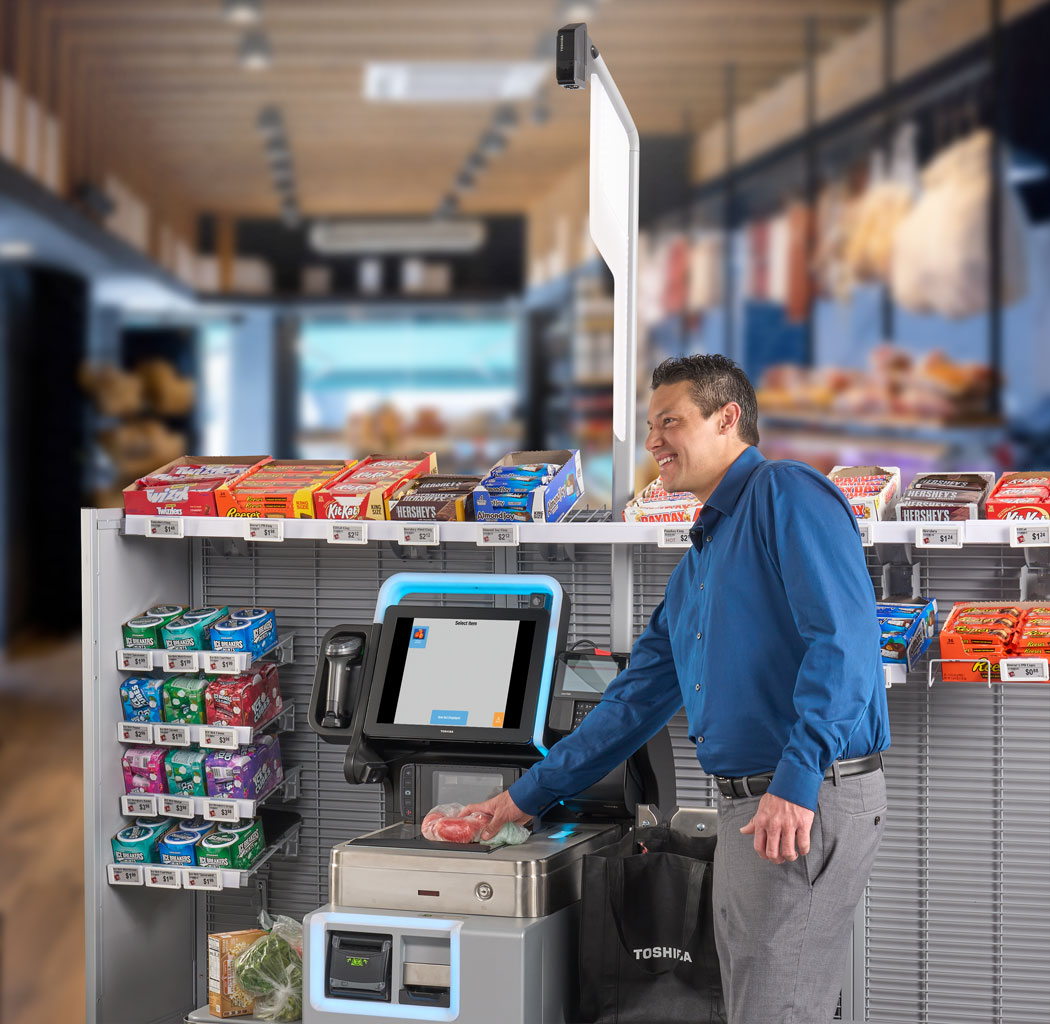The introduction of generative AI brought the focus of businesses across the spectrum to the potential of artificial intelligence, but now is the time for the application as companies work to make the technology work for them.
Among retailers, Amazon has been conspicuous in touting its applications of AI. In part, that’s due to the fact that its Amazon Web Services Business is offering AI support to its business customers.
Marketplace is another part of the business where Amazon is applying AI expertise. In September 2023, for example, Amazon launched a set of generative AI capabilities to help make it easier for marketplace sellers to create more thorough and enticing product descriptions, titles and listing details, the company maintained. Amazon developed the capabilities to make it faster and easier for sellers to list new products as well as to enrich existing listings.
The new capabilities use large language models, a type of machine learning trained on vast data pools that can recognize, summarize, translate, predict and generate text and other content based on pre-established rules to build more effective content, including product descriptions. Users need only provide a brief description of the product in a few words or sentences, and the model will generate the needed copy.
Amazon has a history of integrating AI and ML into its operations.
“Amazon has been using machine learning and AI for many years in virtually everything we do,” an Amazon spokesperson told HomePage News. “We’re constantly inventing to help make customers’ lives better and easier, and are currently testing a new feature powered by generative AI to improve shopping on Amazon by helping customers get answers to commonly asked product questions.”

Amazon AI-powered Image Generation
In a survey commissioned by Google Cloud and published earlier this year, 81% of retail decision-makers said they felt an urgency to adopt generative AI technologies, and 72% indicated that they are ready to deploy GenAI technology in 2024. The urgency might arise from the belief among 78% of the C-suite executives surveyed that generative AI will have an evident impact on their industries by 2024’s end. A higher proportion, 95% of those polled, maintained generative AI would affect customer experience. Further, 75% of retail decision-makers said generative AI is a way for retailers to reinvent themselves. Among respondents who said they had rolled out generative AI deployments in 2023, 72% expressed satisfaction, while 28% expressed disappointment.
Half of retailers surveyed said they started generative AI initiatives for customer service automation, with 25% of respondents currently piloting such programs and 22% already deploying them, according to Google.
Google is associated with the Gemini model of generative AI, and it is making various inroads as a top player in artificial intelligence and related technologies.
Paul Tepfenhart, global director, retail and consumer solutions at Google, said, “Generative AI will create new and exciting opportunities for shoppers to connect with a retailer’s or CPG’s most important asset: Its brand. Today’s shoppers expect real-time responses, seamless omnichannel shopping, virtual shopping assistants, customized offers and more. Generative AI is poised to help retailers deliver on these expectations while also providing internal benefits like productivity gains and a better employee experience. In 2024, we’ll see generative AI step into the arena as retailers move from experimentation to production, unlocking both efficiency and revenue opportunities securely and at scale.”
Tepfenhart said retail decision-makers are coalescing around five use cases for GenAI deployment in 2024. Here are the top five use cases, according to Tepfenhart:
- Customer Service Automation. The majority of retail respondents, at 59%, want to use generative AI to streamline customer service with less human intervention by providing conversation summaries, automating tasks and ultimately driving conversion.
- Marketing Support and Product Description Generation. Just less than half (49%) of respondents want to use GenAI to accelerate product categorization and generate effective customer-centric marketing copy.
- Creative Assistance. A significant proportion of respondents, 44%, want to use generative AI to empower retail creative teams in curating bespoke images and creating content for campaigns and editorial placements, as well as to enable one-to-one personalization.
- Conversational Commerce. Four in 10 respondents want to use generative AI to address shopper inquiries with interactive responses beyond just product recommendations.
- Store Associate Knowledge and Support. Slightly fewer of the respondents, at 38%, want to use generative AI to automatically develop internal knowledge articles from existing data sources, such as product documentation, customer support tickets and employee training materials.
Generative AI will create new and exciting opportunities for shoppers to connect with a retailer’s or CPG’s most important asset: Its brand. Today’s shoppers expect real-time responses, seamless omnichannel shopping, virtual shopping assistants, customized offers and more. Generative AI is poised to help retailers deliver on these expectations while also providing internal benefits like productivity gains and a better employee experience. In 2024, we’ll see generative AI step into the arena as retailers move from experimentation to production, unlocking both efficiency and revenue opportunities securely and at scale.
– Paul Tepfenhart, Global Director, Retail and Consumer Solutions, Google
“In the coming year, we expect to see more retailers embracing a meaningful and growing AI and generative AI toolkit,” Tepfenhart said. “Retailers are no longer experimenting with AI. They’re embedding it into the heart of their businesses to streamline processes, increase differentiation and enhance the customer experience.
“To continue supporting AI innovation, our research also found that retailers plan to increasingly hire for technical positions to support AI adoption,” he continued. “Among our customers, Google Cloud is seeing a number leveraging AI and generative AI in ways that ultimately create better customer experiences and streamline core business processes. For example, Kroger is leveraging Google Cloud’s AI and data analytics technologies to optimize daily work planning for its store associates. GE Appliances is using Google Cloud’s AI platform, Vertex AI, to offer users the ability to generate custom recipes based on the food in their kitchen with its new feature called FlavorlyAI. SmartHQ Assistant, a conversational AI interface, will also use Google Cloud’s generative AI to answer questions about the use and care of connected appliances in the home.”
Shopping Satisfaction
According to IBM Institute for Business Value 2024 Consumer Study: Revolutionize Retail with AI Everywhere, artificial intelligence can play a valuable role in improving shopper satisfaction across retailing.
IBM reported its survey of 20,000 consumers across 26 countries indicated that only 9% of consumers are satisfied with the in-store shopping experience and only 14% with what they encounter online. Consumers must often spend hours searching for goods that satisfy them, scouring product recommendations and reviews, comparing prices and assessing sustainability contributions. To take time and effort out of the process, three in five consumers would like to use AI applications in their shopping, IBM observed.
When it comes to specific functions, 55% of IBM survey respondents said they would use bots or virtual assistants, and 55% said they would employ augmented or virtual reality as they shop. About four in five consumers who haven’t yet used artificial intelligence for shopping would like to see how it could help them when they are doing so, with 86% seeking support in researching products or getting product information, 79% looking for help finding deals and promotions, and 82% seeking aid in getting service/asking questions/resolving issues.

Amazon Dash Cart Services
IBM pointed out that consumers want shopping convenience and recognition of their preferences so that they can get the most accomplished with the least effort. For example, the company noted that almost two-thirds of Gen Zers and Millennials want to shop for products from multiple brands on a marketplace with a single checkout. As for available functions, about one-third of consumers who have used chatbots and virtual assistants were satisfied with the experience, and about 20% were so disappointed that they have written them off.
Joe Dittmar, senior partner, industry leader, retail and distribution, IBM Consulting, said that consumers might be surprised that they’ve been engaged with AI for many years in search and phone systems. GenAI has brought artificial intelligence into the spotlight and pushed businesses to consider how it can help them.
When it comes to the consumer and given privacy regulations and self-adopted rules, loyalty programs and other factors that regulate the interaction between businesses and consumers, companies have to consider how to address shoppers. Shoppers will have to figure out how they want to interact with retailers to get AI benefits such as personalization. In such circumstances, personalization benefits could encourage consumers to develop closer relationships with retailers, including allowing retailers to hold more personal information about shoppers.
“If you’re asking for a hyper-personalized experience, you’re opted in,” Dittmar said. “You’re expecting me to know you and cater to you. You want white glove treatment. If you want to be anonymous, you’re not getting white glove treatment.”
Wariness and AI
Jordan Brannon, president and CEO of digital marketing agency Coalition Technologies, which has helped clients integrate AI technologies, said, even as companies have begun applying AI in their businesses, at least some consumers have expressed skepticism in communications with companies, wondering if they’re conversing with a human or a machine. The concern might be overblown in some respects, some say, as AI still can’t perform all the communications functions a human employee can. But it does indicate a portion of the population remains uncomfortable with the technology.
Then there is the data arms race, and service firms are looking to work with companies to take gathered information and transform it to make it more useful and to monetize it.
“Companies are recognizing that their data potentially helps them leverage AI more effectively, so they are beginning to work on accumulating data, structuring data and looking at ways of sharing that,” Brannon said. “There are tools competing for that market segment helping to gather data quickly, document it, make it usable for generative AI. And certainly within a lot of categories of business, there’s an effort to take and pool data and sell that as a product or service of some kind.”
As companies work out AI opportunities and the ethics required to capitalize on them, GenAI offers some advantages that can be enjoyed immediately.
“Areas where we’re consulting and using AI for clients would include product design, an area where we’ve seen value in AI,” Brannon said. “We’re working with some of our merchants who are manufacturers as well to aggregate user generated content to draw from. Using the generative AI tools to identify certain sentiments around products, the patterns, the colors, the features or benefits, then helping that inform a strategy as to what products should be designed.”
Areas where we’re consulting and using AI for clients would include product design, an area where we’ve seen value in AI. We’re working with some of our merchants who are manufacturers as well to aggregate user generated content to draw from. Using the generative AI tools to identify certain sentiments around products, the patterns, the colors, the features or benefits, then helping that inform a strategy as to what products should be designed.
– Jordan Brannon, president and CEO, Coalition Technologies
Businesses are looking at the use of AI to help them with audience segmentation, especially when working directly with consumers. They can organize data to identify what types of available audiences exist and how to identify and message for them. “That’s been pretty effective,” Brannon noted.
Businesses are also figuring out how AI can help them hone their messages based on factors such as media channels.
“You take the same content but present it a little differently for TikTok, a little differently for email, a little differently for SMS and certainly for on-site copy,” Brannon said. “You can do that pretty effectively with AI.”
AI has figured into functions, such as pricing optimization, for years. Now, the degree of sophistication AI brings to pricing optimization, which is constantly online and more frequently applied in physical stores, has changed how many sectors do business.
Matt Pavich, senior director of strategy and innovation at Revionics, said the recent inflationary period has ratcheted up interest in using AI-driven tools to manage price as applied not only to costs but also to promotion and balancing the profit structure and consumer satisfaction. Superior pricing tools can make managing in inflationary times easier. Pavich said the increasing precision today’s technology provides gives retailers the ability to make business decisions in response to conditions while looking at the most likely outcomes based on predictive models.
Pavich reported that Revionics clients had done well compared to market norms in general because they were ready with tools that helped them make changes in price that were consistent with their own particular business models.
“They’re using the best information tools available to them,” Pavich said. “They are better able to react to prices and have better price recommendations. If they get a cost increase, they’re able to find ways to spread that margin hit so it doesn’t impact the most important price perception items. Maybe it’s change your price 2% in Baltimore but 6% in New Jersey. It’s finding the perfect balance to get the right prices and also have the tools, the predictive science, etc., to better negotiate with vendors. So, that’s really taken traditional AI, expanded it well without genAI. Then genAI dropped.”
The Price Paid
Pavich said the response to GenAI has been varied, with some dismissing it as a fundamental dynamic, some forced by circumstances, boards of CEOs to look more deeply into and some embracing it as a game changer on the scale of the Internet. Already, he pointed out, retail employees are wearing headsets in some stores that allow them to ask genAI questions about products they can’t readily answer, such as if a certain animal food causes allergic reactions.
As such, Pavich noted, retailers are already finding ways to use genAI to “drive better and better outcomes for their customer experiences and outcomes for their customers, and it’s really amazing.”
Within companies, Pavich said, the internal developments driven by AI, particularly in being able to ask in everyday language for data or action rather than running through menus and filters, will change how companies interact with technology and allow them to use it more efficiently and effectively by simplifying interactions. Once that kind of interaction is established, and with the application of predictive analysis driven by AI, the technology can go from problem-solving to becoming a strategic adviser, Pavich noted. From the pricing perspective, the ability to simply ask a capable AI system to analyze and compare the results of strategic decisions becomes a means for people to make quicker and better decisions.
“When you free up time, what you do then is you enable people to elevate their roles,” Pavich said. “Pricing is a classic example. As we rolled out Revionics and other retailer’s adaptive price optimization over the past ten years, the pricing role went from being an executional person entering store prices into an Excel spreadsheet or a Microsoft access to a very elevated strategic role that’s more like should we change prices 2% or 3%. What are the analytics saying? What items are my key items in Miami versus Fort Lauderdale? Now, genAI is going to make that work faster so they can ask more questions and be even more strategic.”
Self-checkout is another area in which AI has improved performance from a product identification standpoint, making use easier and customer satisfaction greater. The technology has also reduced shrinkage in cases when consumers accidentally or purposely scan items incorrectly.

Toshiba Grocery System
Johanna Hinkle, a solution owner on the Innovation and Incubation team at Toshiba Global Commerce Solutions, said in application at checkout, AI has gone from fulfilling the task efficiently to something more exacting, such as identifying perishable products without the need for a bar code.
“It’s really exciting to look at the specific advancements in each technology where it’s not just general capabilities that we have anymore, but we can detect really subtle behaviors and differences between items,” Hinkle said. “So this has really expanded the way we’re able to use things like item identification and user behavior analysis and biometric validation. It’s not just theory. We can tell a Red Delicious apple from a honey crisp. We have solutions that can look at and identify thousands of items without having to individually scan them.”
Hinkle said facial recognition today is at such a level of exactness that it can be tied to payment applications or a loyalty program. Using age estimation, scan for who might be underaged for certain purchases. By automating more elements of the checkout task and doing so more accurately, retailers require less employer involvement in the process at a time when labor is a critical issue.
“Those really advanced and accurate capabilities are what has set us up to have these truly frictionless experiences,” Hinkle said.
Hinkle said the ability to draw information in the store can advance the ability to gather and use data at a higher level. Retailers using AI to coordinate information that might be gleaned in-store through the checkout and on the shelves using camera-based technology can improve inventory management and lead to a greater understanding of in-store behavior regarding products that can be more telling about consumer behavior than they can in e-commerce. With proper privacy safeguards in place, the data also can form a basis for personalization and greater customer satisfaction. At that point, retailers can compare and contrast in-store and e-commerce data to get an even larger view of customers and how they are shopping. Even on the store level, more retail time data developed and applied to a given challenge may reveal, when analyzed by management using AI to sift all that’s been gathered, what’s happening isn’t what after-the-fact reports suggest.
“All of our solutions and technologies have been developed in really close partnership with our retailers,” Hinkle said. “We have some fantastic relationships where we need to understand their problems and all these solutions we’re developing are directly addressing those needs. We’re building all of these pieces to be really modular so we can repurpose these elemental technologies to solve these different problems.”
The Inside Scoop
Retailers want to associate more closely with in-store and online shopping experiences to make the most of their chances to convert shoppers more demanding when it comes to discovering and selecting what they want. In the end, retailers recognize many consumers want to examine a product in-store but also want the option of linking directly with the range of related products and services available online, and vice versa in the case of consumers who prefer to see a product before making a final purchase decision. Then, retailers want to link in-store shopping data with what is generated online to get a better picture of shopper preferences and create more attractive product offers. Retail media initiatives will make that more imperative as they, in effect, sell their customer expertise to vendors and other clients. The ability to generate customized product offers in-store or remind shoppers they have loyalty points to spend can become more practical and effective through the application of AI.
Ethan Chernofsky, senior vice president of marketing at retail store traffic tracker Placer.ai, says data is the key consideration.
“The biggest benefit that AI brings currently is the ability to analyze and make accessible massive amounts of data,” Chernofsky indicated. “From a store traffic perspective, this means optimizing opportunities like location analytics, but it could also give retailers the ability to better personalize messaging and engagements for specific customers.”
The biggest benefit that AI brings currently is the ability to analyze and make accessible massive amounts of data. From a store traffic perspective, this means optimizing opportunities like location analytics, but it could also give retailers the ability to better personalize messaging and engagements for specific customers.
– Ethan Chernofsky, Senior Vice President, Marketing, Placer.ai
At a time when retailers are fixated on the shopping experience, AI offers a range of opportunities, some available now and some expected to emerge over the next year or two as AI-driven systems test and launch. Chernofsky said the way forward will require making choices and investments.
“There are two paths,” Chernofsky said. “The first is better understanding opt-in loyalty members and leveraging their engagements to create a more tailored and ideal experience. The second is to look at large-scale data to analyze wider trends and better serve audiences without needing to lean on or gather personal data. The former provides a very valuable mechanism for bringing impact to loyalty programs, while the latter has wide applications and can help from a broader audience engagement perspective.”
Retailers already have the chance to use AI to tap deep pools of data and develop insights that are current but derive from information gathered over time and across a given business’ customer base. The ability to tease out more accurate and actionable data about the typical consumer is important. AI also makes it easier to delve into the priorities of important, if not main, customer clusters and niche groups vital for their profit generation, seasonal shopping and future growth.
Although AI has something of a future-is-today character that can make it difficult to embrace, one knowledgeable observer made the reassuring comment that what’s been dubbed artificial intelligence is, at its center, applied statistical analysis applied quickly. In that case, it’s evident AI, as a tool, should be subservient to the business purpose.
Placer.ai’s Chernofsky pointed out a clearer view on shoppers, their habits and thinking, something retailers have always worked to obtain, can be provided by AI.
“Any place where there are large amounts of data that can be utilized to glean insights is an ideal target for AI applications,” he said. “Whether it be understanding a given user’s shopping patterns in order to better align deals and opportunities or looking through larger data sets, the biggest value being provided by AI currently is the capacity to operationalize data to drive better decisions and actions.”
Making Connections
SymphonyAI has been working with companies on predictive and generative AI initiatives since 2017. The company recently teamed with Microsoft as an AI software-as-a-service provider to bring its capabilities to more partners. In the deal, SymphonyAI will offer AI software applications via the Microsoft Azure OpenAI Service to retailers and CPGs worldwide.
Manish Choudhary, president of SymphonyAI retail/CPG, said the company’s clients today are looking at connected retail with artificial intelligence, supporting their grand intentions to link the supply chain to the shelf to promotions. They also want better forecasting and replenishment, a reliable way to prevent out-of-stocks.
“For many decades, these capabilities have lived in silos, but now clients are asking for connected insights and availability along with easier, better, more accurate predictions with faster decision-making, all while reducing labor and expenses,” Choudhary said. “With the advancement of generative AI copilots, the client’s user experience and expectations are set by the standard experience of AI. SymphonyAI is providing retailers and CPGs with a generative AI-based interface, a disruptive UI/UX experience of composable, customizable designs along with an architecture of 20-plus fundamental, core AI predictive models.”
Choudhary added, “In terms of trending, we are right at the point where the technology and the market are transitioning and where AI is trending with the blending of predictive AI and generative AI, along with a user experience that connects the insights and data between the supply chain, store operations, customer-centric retailing, and category management.”





